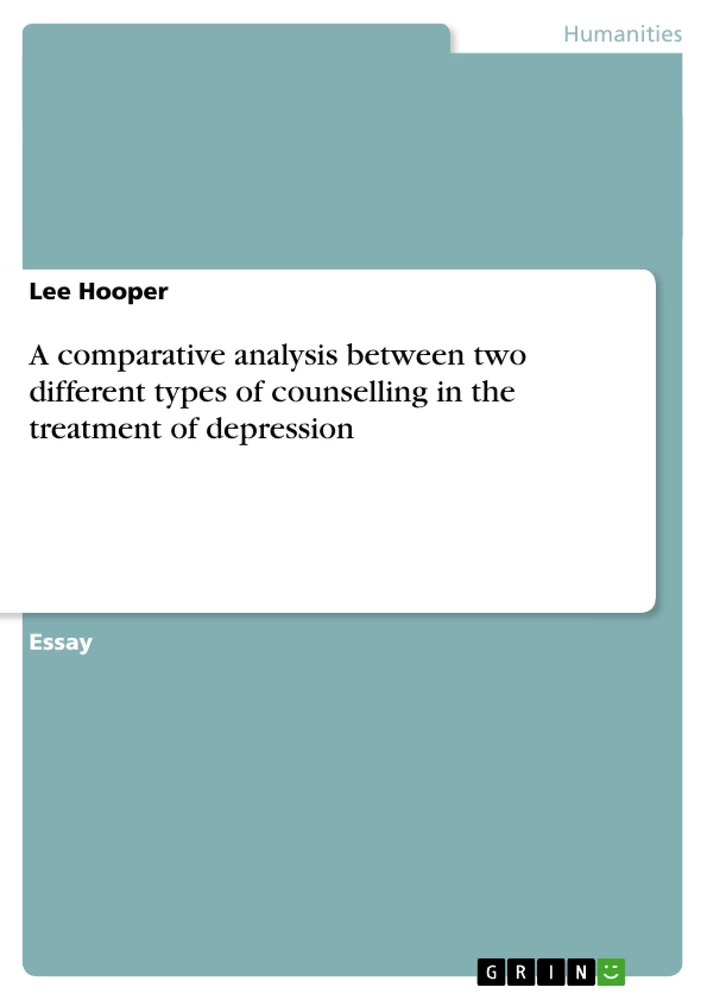With the ever-growing increase of psychological disorders in modern society, cognitive-behavioural therapy has evolved as of the most accepted and mainstream approaches throughout the Western world. In accordance with the need for an ever-growing variety of treatment types – to attend to the different needs of individuals – there has been a steady evolution of relatively new theories for the treatment of psychological disorders. One that has found particular attention in the area of postmodern approaches is compassion-focused therapy. Although both approaches are beneficial in the treatment of psychological disorders, compassion-focused therapy may have an advantage over cognitive-behavioural therapy as it provides a more concrete unification between logical thought and feelings. This is mainly through its central application of giving compassion to the client as the foundational work to therapy. To illustrate this point, both theories will be outlined and then compared and contrasted around the theme of depression since this is a prevalent issue and one that is considered to be the domain of cognitive-behavioural treatment, with a demonstrative outcome of how the differences between the two approaches can play a significant role in successful treatment. Compassion-focused therapy has the potential to be therapeutically more effective in treating depression, providing the client is ready to accept going beyond challenging their logical thinking and behaviour; ready to allow compassion in their life, and to be aware of how to balance their physiological regulatory systems.
Inhaltsverzeichnis (Table of Contents)
- Introduction
- Cognitive-behavioural therapy
- Cognitive elements
- Behavioural elements
- Compassion-focused therapy
- Attributes
- Skills
- Regulation systems
- Threat and protection system
- Drive and excitement system
- Contentment system
- Comparison between cognitive-behavioural therapy and compassion-focused therapy
- Similarities
- Advantages of compassion-focused therapy
Zielsetzung und Themenschwerpunkte (Objectives and Key Themes)
The essay aims to compare and contrast two different types of counselling, cognitive-behavioural therapy (CBT) and compassion-focused therapy (CFT), in the treatment of depression. The essay explores the theoretical underpinnings and practical applications of each approach and examines how they contribute to understanding and addressing depressive symptoms.
- Defining depression and its characteristics
- Exploring the principles of cognitive-behavioural therapy
- Examining the principles of compassion-focused therapy
- Analyzing the role of regulation systems in depression and their impact on treatment
- Comparing and contrasting CBT and CFT in terms of their effectiveness in treating depression
Zusammenfassung der Kapitel (Chapter Summaries)
The essay begins by defining depression and its key symptoms, providing a foundation for understanding the disorder and its potential treatment.
The essay then delves into the theoretical underpinnings of cognitive-behavioural therapy, exploring its cognitive and behavioural elements. This includes examining the role of negative schemas, automatic thought patterns, and learned behaviours in the development of depression.
Next, the essay introduces compassion-focused therapy, outlining its core principles and theoretical framework. This includes the importance of cultivating compassion, the multi-dimensional model of compassion, and the concept of regulation systems.
The essay then examines the three regulation systems proposed by CFT: the threat and protection system, the drive and excitement system, and the contentment system. It explains how these systems contribute to emotional regulation and how imbalances within these systems can contribute to depression.
Finally, the essay compares and contrasts CBT and CFT, highlighting their similarities and differences. It emphasizes how both approaches are effective in treating depression but suggests that CFT may offer advantages, particularly in bridging the gap between logical understanding and emotional acceptance of depressive symptoms.
Schlüsselwörter (Keywords)
The essay explores the key concepts of cognitive-behavioural therapy (CBT), compassion-focused therapy (CFT), depression, regulation systems, emotional regulation, negative schemas, automatic thoughts, learned behaviours, compassion, self-compassion, and the integration of logical and emotional understanding in therapy.
- Citation du texte
- Lee Hooper (Auteur), 2011, A comparative analysis between two different types of counselling in the treatment of depression, Munich, GRIN Verlag, https://www.grin.com/document/262258



